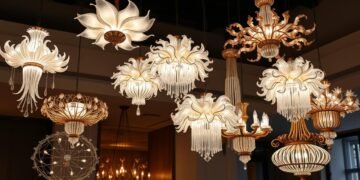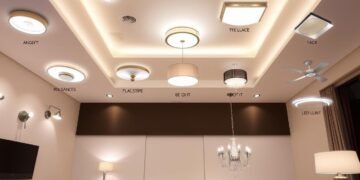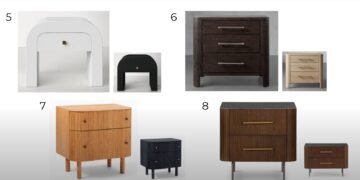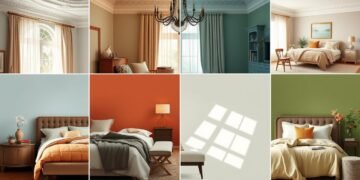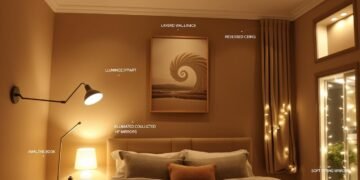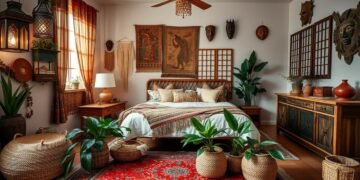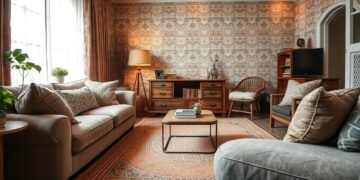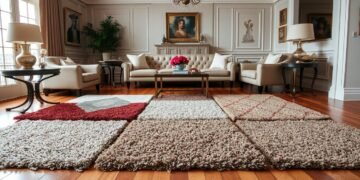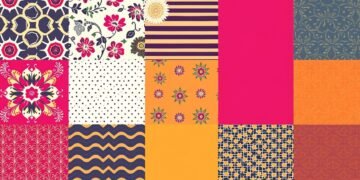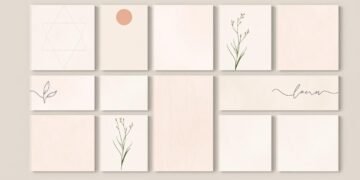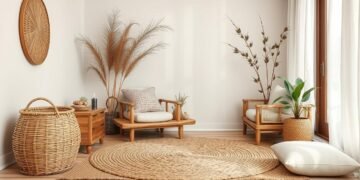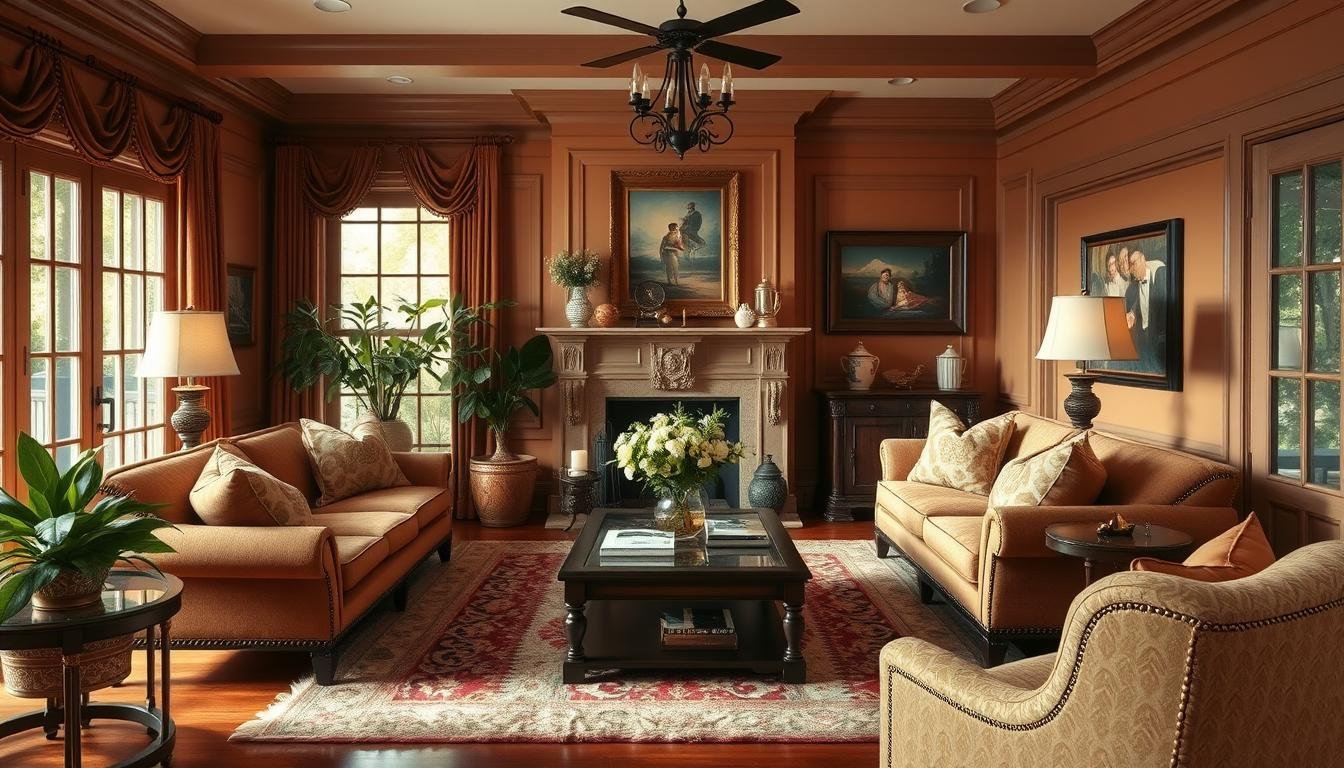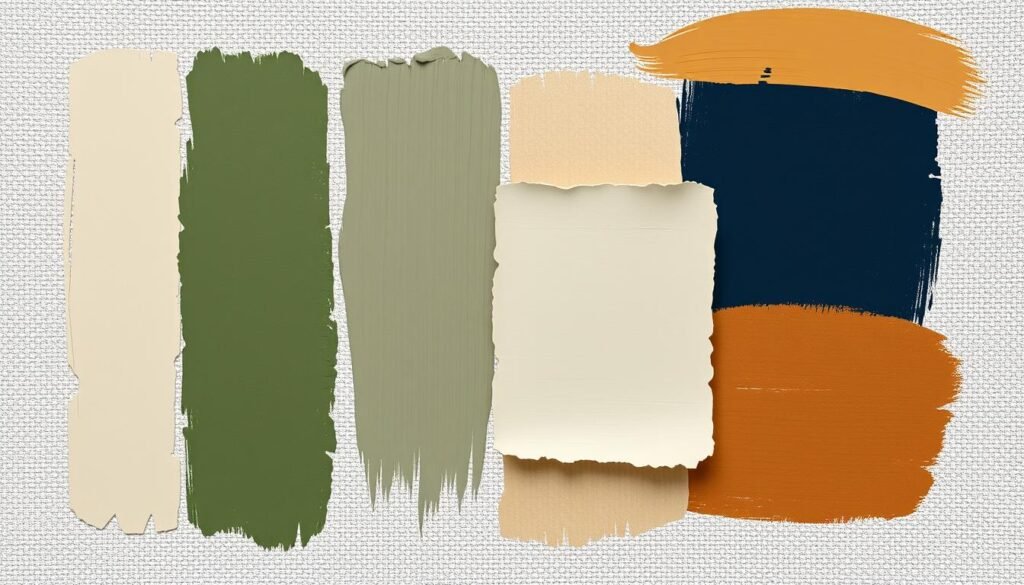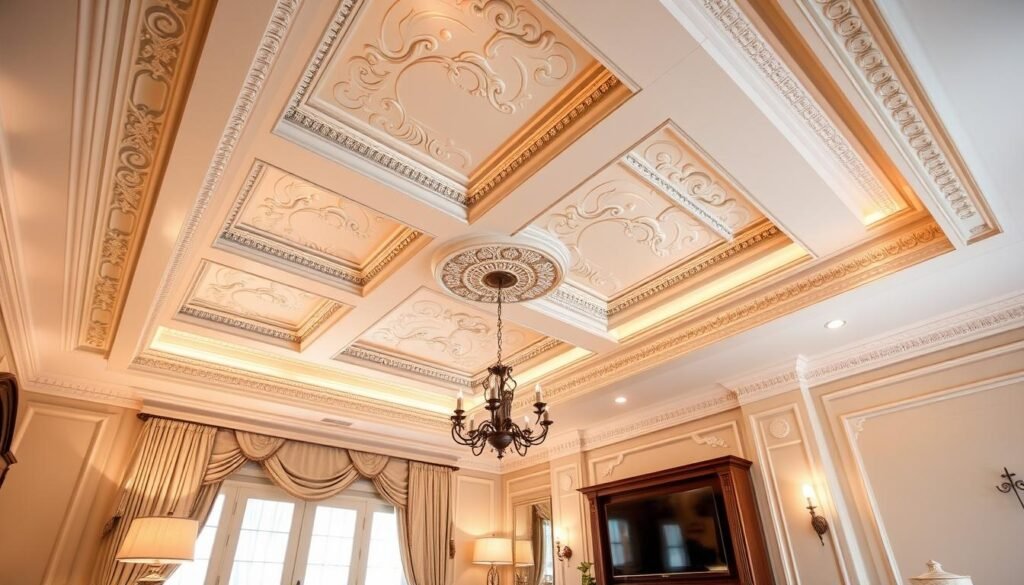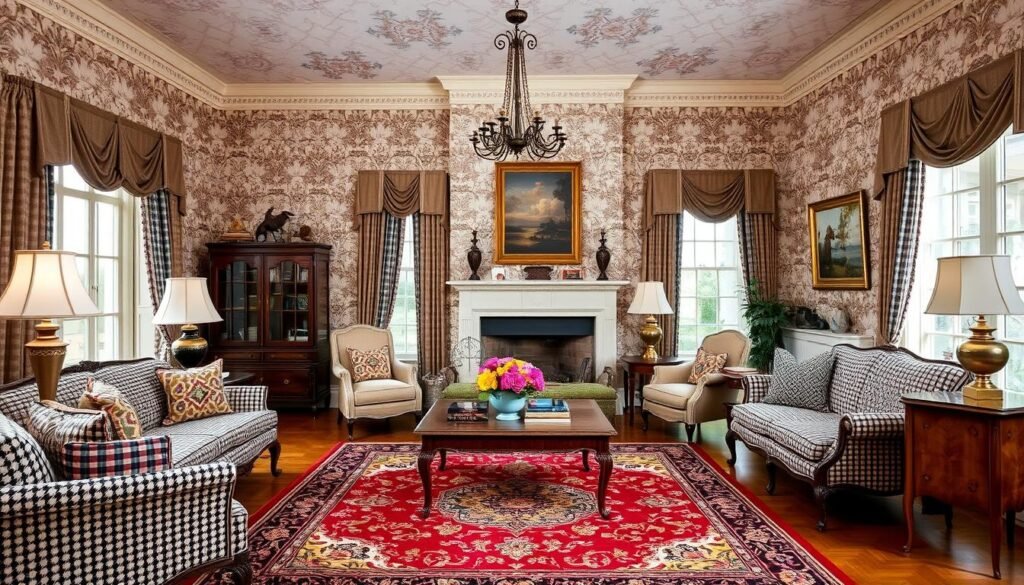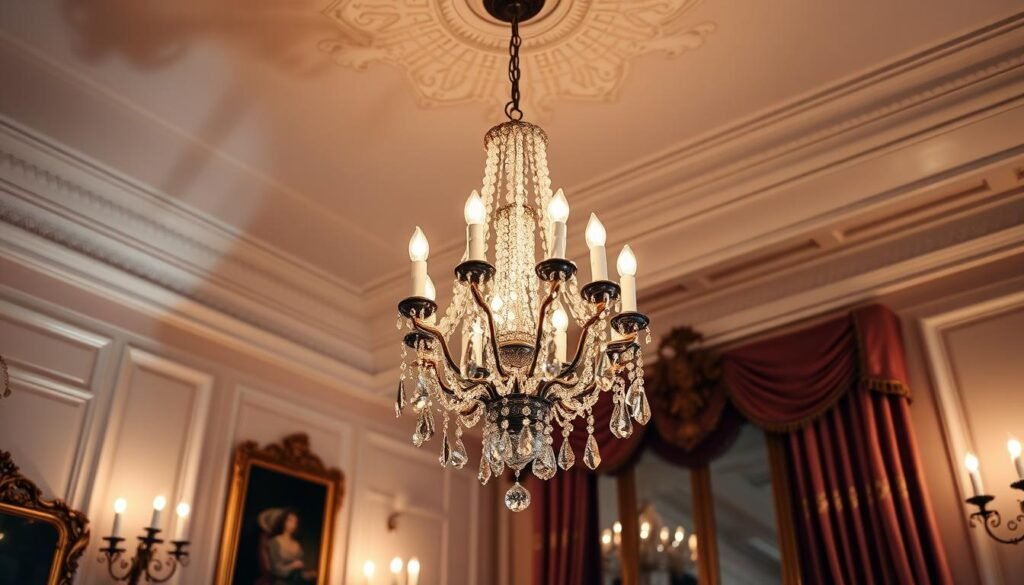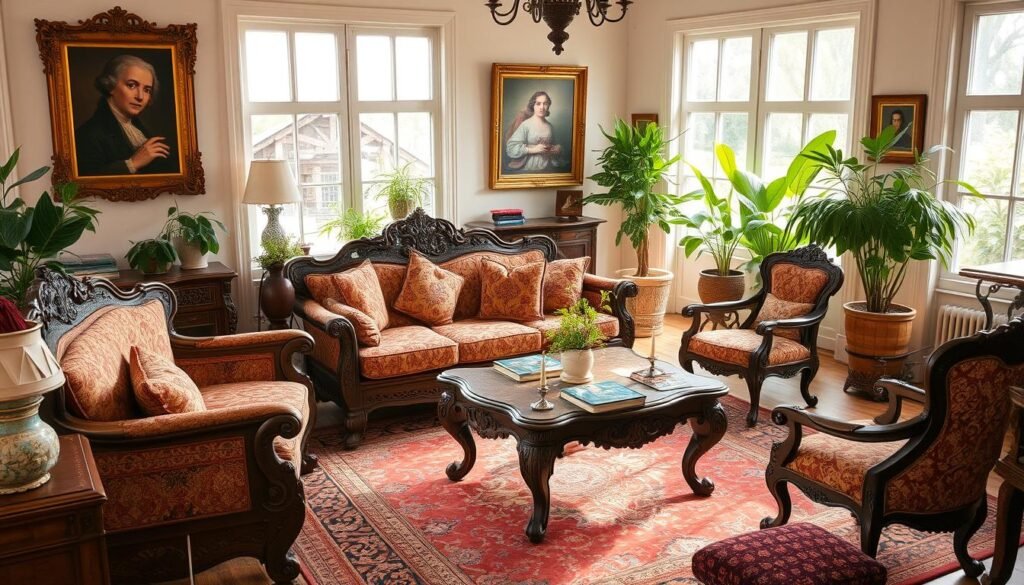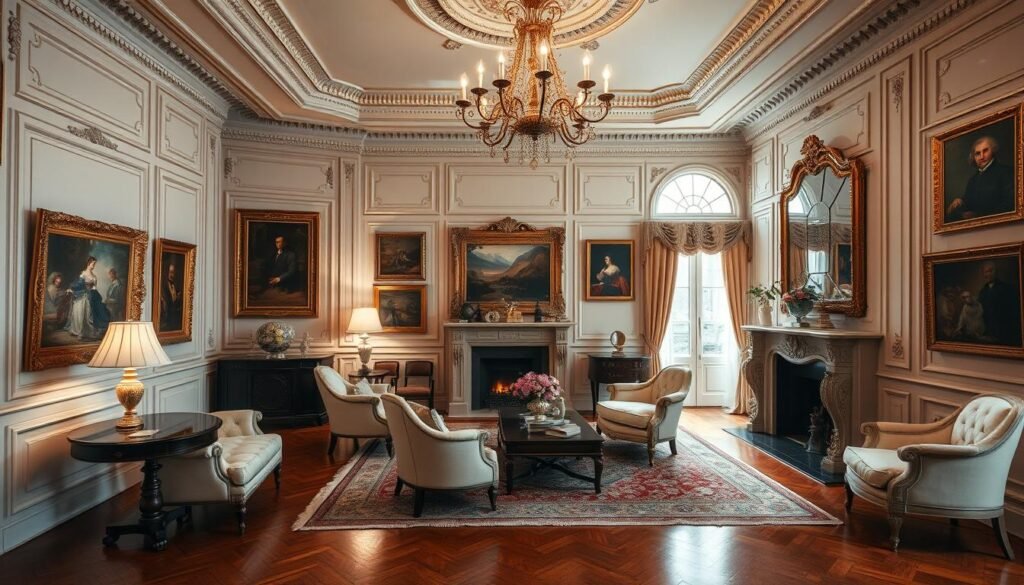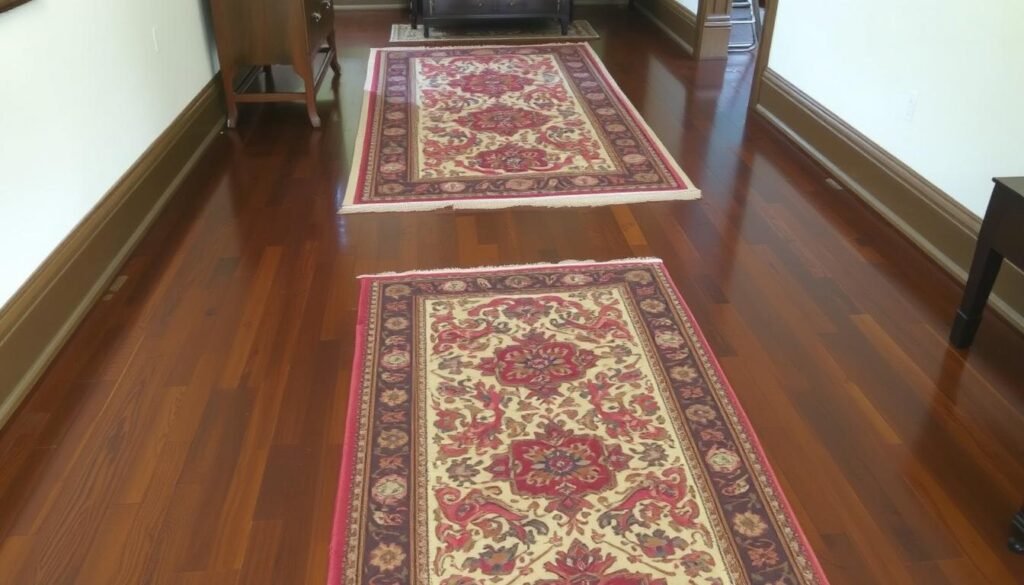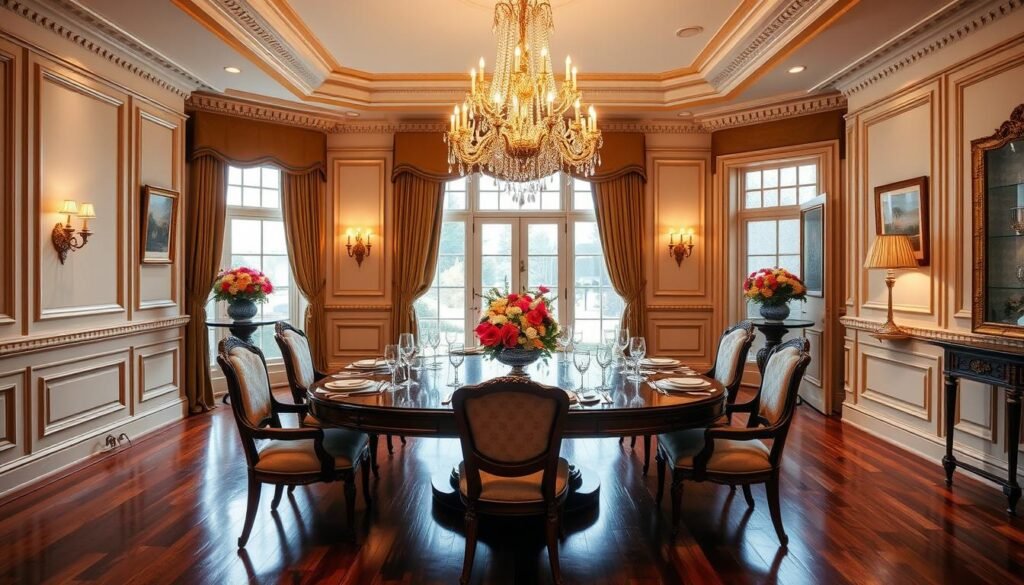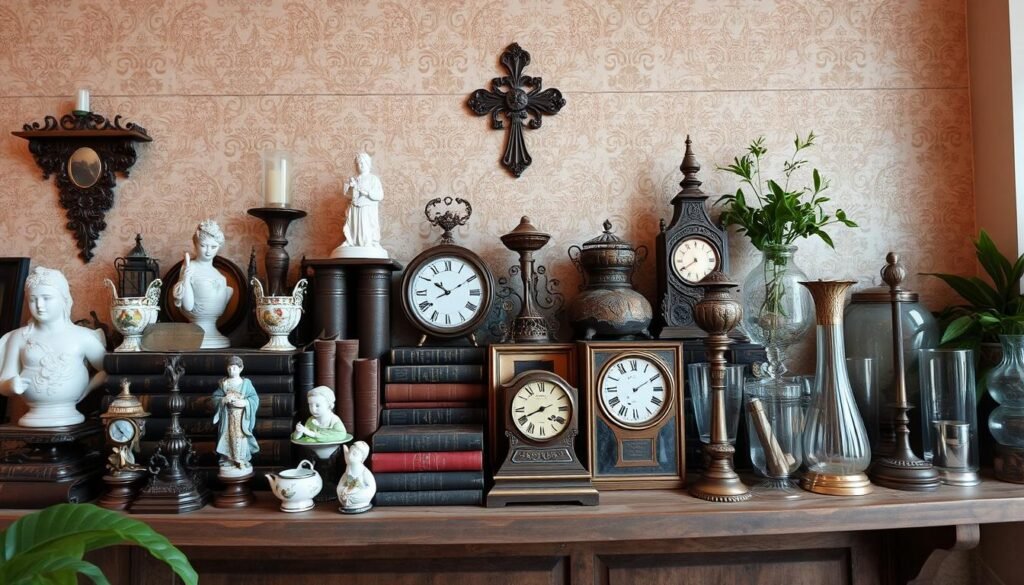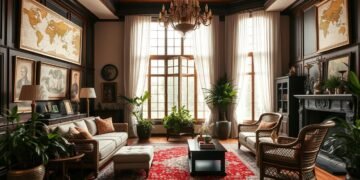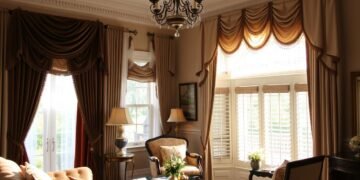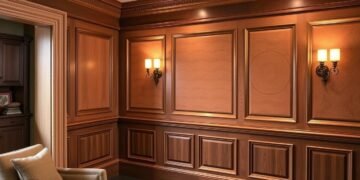“Style is a way to say who you are without having to speak.” – Rachel Zoe
Creating a home with timeless elegance is easier than you think. Mix traditional decor with classic and transitional styles for spaces that are both stylish and cozy. This guide will show you 12 ways to add lasting charm to your home, from choosing the right colors to adding heritage pieces.
Traditional design, rooted in the 18th and 19th centuries, is a solid base for elegant interiors1. Transitional style, born in the mid-20th century, connects classic and modern, making spaces feel both welcoming and refined1. By using these timeless designs, you’ll make your home both inviting and stylish.
In transitional spaces, furniture often has a mix of curved and straight lines, making the room look balanced and beautiful1. This style uses neutral colors, organic textures, and bold lighting to create a unified look1. By mixing these elements, your home will feel both classic and modern.
Table of Contents
- 1 Understanding Traditional, Classic & Transitional Styles
- 1.1 Relatedarticles
- 1.2 Top 10 Iconic British Colonial Décor Elements to Infuse Classic Style into Your Home
- 1.3 5 Timeless Window Treatments That Will Perfectly Complement Classic Interiors
- 1.4 Bring Charm to Your Home: 6 Traditional Wall Paneling Designs You’ll Love
- 1.5 Defining Classic Interior Design
- 1.6 Traditional Style Elements
- 1.7 Transitional Design Characteristics
- 2 Creating a Timeless Color Palette
- 3 Selecting Quality Furniture Pieces
- 4 Incorporating Architectural Details
- 5 Mastering Symmetrical Balance
- 6 Choosing Timeless Patterns and Textures
- 7 Lighting Elements for Classic Ambiance
- 8 Window Treatment Strategies
- 9 Incorporating Heritage Furniture
- 10 Art and Accessories Selection
- 11 Traditional Flooring Options
- 12 Creating Sophisticated Living Spaces
- 13 Designing Formal Dining Areas
- 14 Curating Personal Collections
- 15 Conclusion
- 16 FAQ
- 16.1 What are the key differences between traditional, classic, and transitional styles?
- 16.2 How can I create a timeless color palette for my home?
- 16.3 What types of furniture should I invest in for a traditional or classic interior?
- 16.4 How can I incorporate architectural details into my home for a more traditional look?
- 16.5 What are some tips for achieving symmetrical balance in my interior design?
- 16.6 How can I mix patterns and textures in a traditional or transitional space?
- 16.7 What lighting options work best for traditional and classic interiors?
- 16.8 How can I incorporate antique or heirloom pieces into my modern home?
- 16.9 What are some tips for selecting and displaying art in a traditional or classic interior?
- 16.10 How can I create a sophisticated living space that balances comfort and elegance?
- 17 Source Links
Key Takeaways
- Blend traditional and modern elements for a timeless aesthetic
- Use neutral color palettes as a foundation for elegant interiors
- Incorporate quality furniture pieces with classic silhouettes
- Balance old and new elements in your design
- Focus on symmetry and proportion in room layouts
- Add depth with varied textures and patterns
- Use lighting to create ambiance and highlight key features
Understanding Traditional, Classic & Transitional Styles
Interior design has many styles, each with its own charm. Classic vs. traditional decor and transitional styles are key to a timeless home. Let’s dive into these design approaches.
Defining Classic Interior Design
Classic interior design is all about timeless elegance. It takes inspiration from old European palaces. You’ll find furniture made from noble woods, marble, and velvet2.
This style is grand and formal. It’s perfect for those who love lasting beauty.
Traditional Style Elements
Traditional style adds to classic design with heritage touches. It uses crystals, silverware, porcelain, and flowers for a regal feel2. Traditional fixtures have finishes like polished nickel and brushed nickel3.
This creates a warm and inviting space.
Transitional Design Characteristics
Transitional decor mixes traditional and modern styles. It’s for those who want a lighter traditional look2. Transitional design has clean lines and neutral colors.
It balances masculine and feminine touches. Bathrooms in transitional homes use natural materials and finishes like matte black3.
“Transitional style is the perfect balance between traditional elegance and contemporary comfort, making it fresh yet timeless.”
Knowing these styles helps you mix modern touches with traditional design. Or, you can create a transitional space that shows your unique taste and lifestyle.
Creating a Timeless Color Palette
A timeless color palette is key to classic color schemes. Neutral colors like taupe, gray, and beige calm your home. These colors act as a canvas for both classic and modern pieces4.
Soft, muted tones let you add color with accessories. This keeps your space modern yet classic. Transitional living rooms often use neutral colors for a calm atmosphere5.
Here are some tips for timeless color palettes:
- Start with neutral colors
- Add subtle patterns and textures
- Use accessories for pops of color
- Balance warm and cool tones
By following these tips, you’ll get a color scheme that lasts. It will stay classic yet adapt to new trends. The secret is in its versatility and blending of old and new4.
| Color Category | Examples | Purpose |
|---|---|---|
| Neutrals | Taupe, Gray, Beige | Base colors |
| Accent Colors | Navy, Burgundy, Forest Green | Add depth and interest |
| Metallic Tones | Gold, Silver, Bronze | Enhance sophistication |
Selecting Quality Furniture Pieces
Choosing the right furniture can make your home timeless. Look for pieces that mix classic charm with modern use.
Investment-worthy Classic Pieces
When picking furniture, focus on quality materials and craftsmanship. Dark wood with curved lines and carvings is a good choice. Add luxury with silk or velvet upholstery6.
These elements create a sophisticated look that lasts.
Mixing Vintage with Modern
Transitional style lets you mix old and new. Pair a classic sofa with a sleek glass coffee table. This mix balances traditional warmth with modern lines7.
Furniture Placement Guidelines
Think about scale and proportion for a harmonious layout. Use focal points to draw attention and anchor your design7. In living rooms, arrange seating around a fireplace or TV stand.
In dining areas, a buffet or sideboard adds style and function6.
| Room | Essential Furniture | Style Tips |
|---|---|---|
| Living Room | Sofa, accent chairs, coffee table | Mix textures, use neutral colors |
| Bedroom | Bed frame, dresser, nightstands | Add a comfortable chair or bench |
| Dining Room | Dining table, chairs, buffet | Include a statement chandelier |
Timeless furniture is versatile and adaptable. It lets you create spaces that reflect your style while keeping a classic appeal7. By choosing and placing furniture wisely, you can balance traditional elegance with modern comfort.
Incorporating Architectural Details
Add charm and depth to your space with architectural interiors. Crown molding, wall moldings, and wood paneling bring a traditional feel. They also set the stage for modern pieces, creating a timeless look that fits many styles.
Wood paneling brings warmth and texture, making your walls cozy. It suits both formal and casual rooms, appealing to those who love classic designs. Crown molding, in contrast, elevates the room’s elegance with its upward appeal.
Think about adding these architectural touches:
- Painted built-in cabinetry
- Beamed ceilings
- Grand fireplaces
- Wainscoting
- Coffered ceilings
These features boost your home’s architectural appeal, adding sophistication. Transitional architecture mixes old and new, making spaces bright and inviting8. By using these timeless elements, you can craft a look that suits many tastes and lifestyles9.
Remember, balance is essential in traditional design. Strive for symmetry and stability in your spaces10. Choose materials that match your area’s climate and style for a cohesive look.
By carefully choosing these architectural details, you’ll make a home that’s both stylish and lasting. It beautifully merges traditional and modern design.
Mastering Symmetrical Balance
Symmetrical balance is key in interior design, making spaces look elegant11. It uses identical elements on both sides of a central axis, common in traditional designs12. Learning symmetrical layouts can bring harmony and style to your home.
Room Layout Principles
When setting up your room, keep these tips in mind:
- Find a focal point, like a fireplace or window
- Put furniture in pairs on each side of the focal point
- Use the same or similar items for balance
- Make sure furniture fits the space well12
Creating Visual Harmony
Visual harmony is key for a balanced look. Here’s how to achieve it:
- Start with a neutral color and add accent colors for flair11
- Repeat materials, shapes, and colors for consistency11
- Lighting can set the mood and feel of the room12
- Contrast different elements for interest12
Furniture Arrangement Tips
Here are tips for arranging furniture well:
- Check the size and scale of furniture for a good look11
- Use transitional pieces to mix styles11
- Seat arrangements should center around a focal point for balance12
- Think about traffic flow and function when placing furniture
By using these symmetrical balance tips, you can make a timeless and stylish interior. It will show off your personal taste while keeping the atmosphere calm and harmonious.
| Balance Type | Description | Best Used For |
|---|---|---|
| Symmetrical | Identical elements on both sides | Formal, traditional spaces |
| Asymmetrical | Different elements with equal visual weight | Modern, eclectic spaces |
| Radial | Elements arranged around a central point | Circular or rounded spaces |
Choosing Timeless Patterns and Textures
Classic patterns in home decor add sophistication that lasts. Traditional textiles like damask, toile, and subtle floral prints bring elegance and old-world charm13. They look great on upholstery, drapery, and decorative accents.
Rich textures are key to a layered, inviting look. Mix smooth leather with plush velvet, and sleek metals with natural wood for depth and interest1314. This mix of materials makes your space appealing to both sight and touch.
Choose fabrics like linen and velvet for their feel and look. Transitional spaces often use neutral upholstery. Patterns and textures come from pillows and throws14.
| Style | Patterns | Textures | Materials |
|---|---|---|---|
| Traditional | Damask, Toile, Floral | Ornate, Rich | Velvet, Silk |
| Transitional | Subtle, Geometric | Layered, Eclectic | Linen, Leather |
In transitional decor, quality is more important than quantity. Choose a few high-quality pieces for a balanced, sophisticated look14. By mixing classic patterns, rich textures, and traditional textiles, you’ll get a timeless interior that’s both comfortable and stylish.
Lighting Elements for Classic Ambiance
Lighting is key to a sophisticated look. The right lights can warm up a room and add elegance. They also serve as both functional and decorative pieces.
Statement Chandeliers
Elegant chandeliers are the stars of classic lighting. They impress in dining rooms or entryways. Traditional chandeliers, with their ornate details, are a favorite, making up 20% of designs15.
They often come in finishes like crystal, brass, or bronze. This gives them a timeless appeal.
Traditional Wall Sconces
Wall sconces add character to hallways and living areas. They offer a softer light that enhances the room’s feel. The UQL1200 French Rustic Outdoor Wall Light from the Florence Collection is a top pick for classic charm16.
Ambient Lighting Solutions
A layered lighting scheme is essential for a great home atmosphere. Transitional lighting, blending old and new, is the most sought-after, making up 45% of sales15. It brings a warm, simple feel that pairs well with modern and neutral decor17.
| Lighting Style | Market Share | Key Features |
|---|---|---|
| Traditional | 20% | Ornate details, timeless appeal |
| Transitional | 45% | Blend of traditional and modern, versatile |
| Contemporary | 30% | Spacious feel, clean lines |
For a touch of sophistication, consider the UHP2041 Luxe Industrial Bath Fixture from the Harlow Collection for your bathroom16. The right lighting can make your home’s classic style shine while also providing the light you need.
Window Treatment Strategies
Window treatments are key to elegant home styling. Luxurious drapery that falls to the floor adds opulence. These designs come from the 18th and 19th centuries, with warm, dark tones that are timeless18.
Draperies are a classic choice, bringing a timeless look to any room. Adding swags and cornices can make your windows stand out. These details add depth and interest, making your space more sophisticated18.
Choose velvet or silk for your drapes to add luxury. These materials look elegant and symbolize wealth. Pick from French, euro, box, or goblet pleats for structure and style18.
For a mix of old and new, try lighter fabrics or simpler patterns. This style is perfect for those who love classic looks but also want something modern19. Pairing traditional drapes with Roman shades is a great way to add a sleek touch18.
| Window Treatment Style | Key Characteristics | Typical Elements |
|---|---|---|
| Traditional | Luxurious, floor-length draperies | Swags, cornices, pleated curtains |
| Transitional | Blend of classic and modern | Lighter fabrics, simpler patterns |
| Contemporary | Minimalist, unconventional | Smooth fabrics, subtle patterns |
Interior shutters are also a classic choice. They have horizontal louvers and are operated by a tilt wand. They add both function and traditional charm18. Choosing the right window treatments can make your home look elegant and complete.
Incorporating Heritage Furniture
Heritage furniture brings character and history to your home. Antique and heirloom pieces can make a space unique. They blend old and new beautifully. Let’s see how to add these timeless pieces to your decor.
Antique Integration Tips
For antique furnishings, choose medium to dark wood finishes for a traditional look20. Look for items like turned leg chairs and Victorian “brown” pieces for authenticity21. Place these vintage items to highlight your rooms.
Heirloom Piece Placement
Heirloom furniture should be placed with care. Symmetry is key in traditional design22. Pair an antique sideboard with modern art or flank a fireplace with inherited armchairs for balance.
Mixing Old with New
The trend of vintage furniture revival is about mixing styles. Pair a classic Lawson sofa with a modern coffee table for a transitional look21. Use warm neutrals and dark brown to connect old and new20.
| Traditional Elements | Modern Elements | Transitional Blend |
|---|---|---|
| Crystal chandeliers | Abstract art | Textured fabrics |
| Oil paintings | Clean-lined furniture | Leather ottoman |
| Ornate moldings | Minimalist decor | Bold, accentuated forms |
Blending styles well means knowing your room’s architecture and keeping proportions right21. With careful choice and placement, your heritage furniture can make a space that’s both timeless and personal.
Art and Accessories Selection
Choosing the right art and accessories is key to a timeless classic interior. Fine art is essential in traditional and transitional styles, inspired by 18th and 19th-century European décor23. Your walls become a canvas for personal expression, showing off your unique story through curated collections.
When picking pieces, think about classic color palettes. Traditional styles often use rich tones like brown, red, and green as accents23. Transitional designs prefer a neutral background with subtle pops of color23. This balance lets your art and accessories be the stars without overwhelming the room.
Add vintage accents for character and depth. Antique vases, weathered frames, and family heirlooms make your space sophisticated and personal. Display porcelain and china collections in elegant cabinets or as striking centerpieces to show off your refined taste.
“Art is the finishing touch that breathes life into a room, reflecting the homeowner’s personality and experiences.”
For a transitional look, blend modern and classic elements. This style combines clean lines with subtle patterns for a light and airy feel2324. Use bold, colorful accents against a neutral background to highlight your art pieces24. In transitional design, it’s best to keep patterns and decorative elements simple.
By carefully choosing and arranging your art and accessories, you can create a stylish and personal space. Whether you love the ornate details of traditional design or the sleek simplicity of transitional style, your curated collections will add warmth and character to your home.
Traditional Flooring Options
Choosing classic styles for your floors is key to timeless elegance. Traditional hardwood floors are a favorite, bringing warmth and character to any room25.
Hardwood Considerations
Warm, medium tones like chestnut or honey maple hardwood floors welcome you. These classic choices show off natural grain patterns and irregularities, adding depth25. In older Victorian homes, pine flooring was common, with widths of 5 ½ to 6 ¾ inches26.
Area Rug Selection
Pair your hardwood floors with antique rugs for sophistication. Rich colors and detailed patterns in Berber or plush carpets are perfect for traditional settings. Use area rugs sparingly to highlight your hardwood and add visual interest.
Pattern Mixing Guidelines
When mixing patterns, think about scale and color harmony. Pair larger patterns with smaller ones, making sure they share a color palette. This creates a cohesive look and adds depth to your room’s design.
Remember, traditional flooring like well-maintained oak can boost your home’s appeal to buyers25. With many cost-effective options, you can achieve a timeless look that fits your style and budget.
Creating Sophisticated Living Spaces
Make your home more elegant with spaces that are both comfy and stylish. Transitional design, a trend on social media, is perfect for this. It mixes classic and modern elements27. This way, you get a stylish look without losing practicality.
Begin with a neutral color scheme of beige, grey, and white for walls and big furniture. Add bold colors like deep blues or rich greens for depth and interest2728. This mix makes your furniture timeless.
Choose furniture that combines classic curves with modern lines. This mix of old and new is key in transitional style, making your space welcoming and stylish28. Adding wood tones brings warmth and character to your space28.
To make your space sophisticated, focus on these key points:
- Choose comfy seating like plush sofas and statement armchairs
- Use built-in bookshelves or display cabinets to show off collections
- Place furniture to create cozy conversation areas
- Add side tables and ottomans for style and function
In transitional design, every piece should be useful and stylish27. This way, your living spaces are both lovely and practical, ideal for today’s living.
| Traditional Design | Transitional Design |
|---|---|
| Ornate interiors inspired by 17th-18th century European countryside | Mix of classic and modern elements |
| Darker, richer color tones | Neutral colors with pops of soft pastels |
| Formal, vintage feel | Comfortable, elegant design |
| Abundant accessories and patterns | Subtle, clean lines in decor |
By following these tips, you’ll have living spaces that are both timeless and trendy. They offer the perfect mix of comfort and elegance for your home29.
Designing Formal Dining Areas
Creating a formal dining area needs careful thought. Start with a large dining table as the main piece. Choose long, wooden, rectangular tables in darker finishes like mahogany, walnut, or cherry for a classic look30.
Next, pick chairs with classic shapes and quality fabric. Mix different chair styles for a modern touch. Use chairs in neutral colors like beige, gray, or soft blue31. Adding a bench on one side of the table adds versatility.
A statement chandelier is key for your dining room. Mix traditional shapes with modern materials for a striking look. Wall sconces add warmth and sophistication31.
Display your fine china and silverware in a traditional sideboard or china cabinet. Wood sideboards with metal hardware are great for storage and showing off your collections31.
Place a rug under the dining table to define the space and add warmth. Make sure it’s big enough for the table and chairs, even when pulled out31. This keeps the look cohesive and protects your floor.
| Element | Traditional | Transitional | Contemporary |
|---|---|---|---|
| Table | Long, wooden, rectangular | Simplified, streamlined | Sleek, mixed materials |
| Chairs | Classic silhouettes | Mixed styles, upholstered | Clean lines, sharp angles |
| Color Palette | Rich, warm tones | Neutral with muted accents | Minimalist, monochromatic |
| Decor | Ornate details | Balanced mix | Minimal flourishes |
Quality is more important than quantity in formal dining rooms. Choose a few, high-quality pieces that last. Add personal touches to show your style and story31. This way, you’ll have a timeless and welcoming dining area that’s both elegant and comfortable.
Curating Personal Collections
Adding personal collections to your home brings character and style. The way you display your items is key. Let’s look at how to organize and show off your antique treasures with flair.
Display Techniques
Use display cases, built-in shelves, or vignettes to showcase your items. Group similar items for a strong visual effect. Balance your displays with empty space for a sleek look32.
Lighting can highlight special pieces and set the mood. It’s all about creating a beautiful atmosphere.
Organizing Collections
Organize your items by theme, color, or size. Place larger items as focal points and fill gaps with smaller ones. Mix different textures and materials for interest.
Use trays or decorative boxes to keep small items tidy. This makes your collection look neat and organized.
| Collection Type | Display Idea | Organization Tip |
|---|---|---|
| Vintage Books | Open bookcase | Sort by color or size |
| Antique Plates | Wall-mounted plate rack | Arrange by pattern or era |
| Crystal Figurines | Glass-front cabinet | Group by animal or theme |
Rotating Seasonal Items
Change up your decor by rotating seasonal items. Store away items not in season and bring them out when it’s time. This keeps your space fresh and prevents clutter.
Creating themed displays for holidays or special events adds variety. Remember, balance is key. Your displays should enhance your home’s style without overwhelming it33.
Conclusion
Choosing Traditional, Classic & Transitional styles helps you make your home look great forever. You can mix old and new to make spaces that last. The Roslyn Residence shows how old features like window grilles work with new lights and furniture34.
In 2019, 18% of homes went for transitional design, showing it’s getting more popular. This style uses calm colors, soft furniture, and mixes light and warmth well35. You can mix old stone fireplaces with new fireboxes or wooden pieces with metal for a modern look.
Transitional homes love natural light and open spaces. Use simple art and balance old furniture with new pieces like glass or metal36. By following these tips, your home will stay stylish and welcoming for many years.
FAQ
What are the key differences between traditional, classic, and transitional styles?
How can I create a timeless color palette for my home?
What types of furniture should I invest in for a traditional or classic interior?
How can I incorporate architectural details into my home for a more traditional look?
What are some tips for achieving symmetrical balance in my interior design?
How can I mix patterns and textures in a traditional or transitional space?
What lighting options work best for traditional and classic interiors?
How can I incorporate antique or heirloom pieces into my modern home?
What are some tips for selecting and displaying art in a traditional or classic interior?
How can I create a sophisticated living space that balances comfort and elegance?
Source Links
- Transitional Design: Everything You Need to Know About This Traditional and Modern Style
- Decoration: traditional and transitional styles – Coverstyl
- How to Define Traditional, Transitional, and Contemporary Style
- Blend Classic and Contemporary with Decoratly 🏠✨
- Transitional Living Rooms: How to Get the Timeless Look – Decorilla Online Interior Design
- How To Choose and Arrange Furniture
- What is the Transitional Furniture Style?
- DK Studio
- Understanding Transitional Architecture Style: A Blend of Traditional and Modern Design – 1to1 Plans
- Transitional Architecture: Explained
- The Art of Mixing and Matching Furniture Styles – Made4home
- Mastering the 10 Principles of Interior Design
- What’s the difference between transitional and traditional interior design? Designers explain these two similar styles
- Beautiful Transitional Style: This Just Might Be Your Style
- What’s Your Unique Lighting Style?
- Transitional
- Spotlight: Transitional Lighting Styles | Capitol Lighting 1800lighting.com
- What are the Best Window Coverings for Traditional Homes? – High Country Drapery Designs
- Window Treatments: Traditional, Transitional or Contemporary?
- Style Trial: Traditional Style Furniture and Transitional Style Furniture
- The Trick To Mixing Modern and Traditional Furniture
- 10 Traditional Style Interior Design Ideas
- Traditional Vs Transitional Style Interior Design: What’s The Difference? – Décor Aid
- Interior Design Styles 101: The Ultimate Guide To Decorating Styles in 2025 – Decorilla Online Interior Design
- Give Your Home a Timeless Look with Traditional Flooring and Design
- Interior Design Style & Architecture: Find Complementary Flooring
- Transitional Interior Design: A Mix of Classic and Contemporary
- Traditional Vs Transitional Style Interior Design: What’s The Difference? – Décor Aid
- Renovating from Traditional to Transitional Design – Parker Design Build Remodel
- 3 Distinct Dining Room Styles for Your Home: Traditional vs Transitional vs Contemporary
- Creating a Transitional Dining Room | California Dining & Barstools
- 20 Best Transitional Interior Design Ideas of 2025 – Decorilla Online Interior Design
- Traditional Interior Design: Everything You Need to Know About This Classic and Timeless Style
- Timeless Transitional: Mixing Modern and Traditional Design | Mojo Stumer
- Transitional Design: Blending Classic and Modern Styles
- A Guide To Transitional Interior Design Style for Your Home – Foyr

